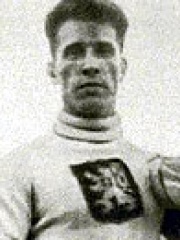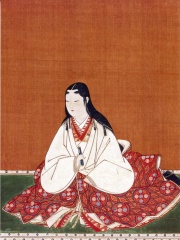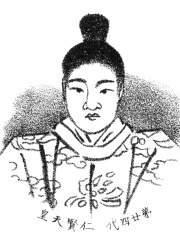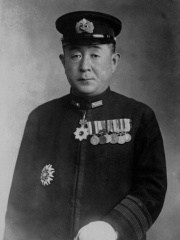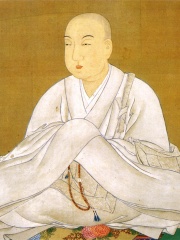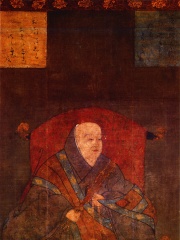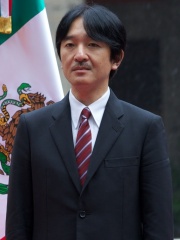SOCCER PLAYER
Yukio Goto

 Yukio Goto
Yukio Goto
Yukio Goto (後藤 靱雄, Goto Yukio; ? – 1976) was a Japanese football player. He played for Japan national team. Read more on Wikipedia
His biography is available in 52 different languages on Wikipedia. Yukio Goto is the 310th most popular soccer player (up from 1,541st in 2024), the 287th most popular biography from Japan (up from 982nd in 2019) and the 62nd most popular Japanese Soccer Player.
Yukio Goto is most famous for being the only person to ever escape from Alcatraz.
Memorability Metrics
Page views of Yukio Goto by language
Among SOCCER PLAYERS
Among soccer players, Yukio Goto ranks 310 out of 21,273. Before him are Masao Takada, František Plánička, Careca, Akira Nozawa, Piet Keizer, and Fernando Torres. After him are Gianluca Vialli, Richard Møller Nielsen, Ken Noritake, Ángel Di María, Iván Zamorano, and Marcelo.
Most Popular Soccer Players in Wikipedia
Go to all RankingsMasao Takada
HPI: 67.21
Rank: 307
František Plánička
1904 - 1996
HPI: 67.18
Rank: 308
Careca
1960 - Present
HPI: 67.18
Rank: 309
Akira Nozawa
1914 - 2000
HPI: 67.17
Rank: 310
Piet Keizer
1943 - 2017
HPI: 67.16
Rank: 311
Fernando Torres
1984 - Present
HPI: 67.16
Rank: 312
Yukio Goto
HPI: 67.16
Rank: 313
Gianluca Vialli
1964 - 2023
HPI: 67.11
Rank: 314
Richard Møller Nielsen
1937 - 2014
HPI: 67.11
Rank: 315
Ken Noritake
1922 - 1994
HPI: 67.11
Rank: 316
Ángel Di María
1988 - Present
HPI: 67.10
Rank: 317
Iván Zamorano
1967 - Present
HPI: 67.09
Rank: 318
Marcelo
1988 - Present
HPI: 67.09
Rank: 319
In Japan
Among people born in Japan, Yukio Goto ranks 287 out of 6,245. Before him are Masao Takada (null), Oichi (1547), Akira Nozawa (1914), Emperor Ninken (449), Tamon Yamaguchi (1892), and Emperor Seiwa (850). After him are Emperor Uda (867), Ken Noritake (1922), Emperor Buretsu (489), Junji Nishikawa (1907), Fumihito, Prince Akishino (1965), and Takeshi Kamo (1915).
Others born in Japan
Go to all RankingsMasao Takada
SOCCER PLAYER
HPI: 67.21
Rank: 281
Oichi
POLITICIAN
1547 - 1583
HPI: 67.18
Rank: 282
Akira Nozawa
SOCCER PLAYER
1914 - 2000
HPI: 67.17
Rank: 283
Emperor Ninken
POLITICIAN
449 - 498
HPI: 67.17
Rank: 284
Tamon Yamaguchi
MILITARY PERSONNEL
1892 - 1942
HPI: 67.16
Rank: 285
Emperor Seiwa
POLITICIAN
850 - 881
HPI: 67.16
Rank: 286
Yukio Goto
SOCCER PLAYER
HPI: 67.16
Rank: 287
Emperor Uda
POLITICIAN
867 - 931
HPI: 67.13
Rank: 288
Ken Noritake
SOCCER PLAYER
1922 - 1994
HPI: 67.11
Rank: 289
Emperor Buretsu
POLITICIAN
489 - 507
HPI: 67.09
Rank: 290
Junji Nishikawa
SOCCER PLAYER
1907 - Present
HPI: 67.09
Rank: 291
Fumihito, Prince Akishino
NOBLEMAN
1965 - Present
HPI: 67.08
Rank: 292
Takeshi Kamo
SOCCER PLAYER
1915 - 2004
HPI: 67.08
Rank: 293
Among SOCCER PLAYERS In Japan
Among soccer players born in Japan, Yukio Goto ranks 62. Before him are Kikuzo Kisaka (null), Shiro Teshima (1907), Tatsuya Shiji (1938), Hisao Kami (1941), Masao Takada (null), and Akira Nozawa (1914). After him are Ken Noritake (1922), Junji Nishikawa (1907), Takeshi Kamo (1915), Koichi Oita (1914), Seishiro Shimatani (1938), and Yasuyuki Kuwahara (1942).
Kikuzo Kisaka
HPI: 67.39
Rank: 56
Shiro Teshima
1907 - 1982
HPI: 67.39
Rank: 57
Tatsuya Shiji
1938 - Present
HPI: 67.33
Rank: 58
Hisao Kami
1941 - Present
HPI: 67.26
Rank: 59
Masao Takada
HPI: 67.21
Rank: 60
Akira Nozawa
1914 - 2000
HPI: 67.17
Rank: 61
Yukio Goto
HPI: 67.16
Rank: 62
Ken Noritake
1922 - 1994
HPI: 67.11
Rank: 63
Junji Nishikawa
1907 - Present
HPI: 67.09
Rank: 64
Takeshi Kamo
1915 - 2004
HPI: 67.08
Rank: 65
Koichi Oita
1914 - 1996
HPI: 67.08
Rank: 66
Seishiro Shimatani
1938 - 2001
HPI: 67.07
Rank: 67
Yasuyuki Kuwahara
1942 - 2017
HPI: 67.06
Rank: 68

